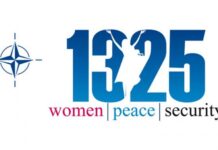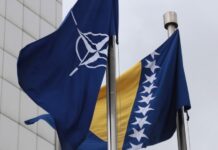Challenges of NATO’s missions {gallery}newsletters/8/5{/gallery}On August 1, 2010, the Netherlands became the first NATO member to withdraw its combat troops from Afghanistan. The Dutch troops were stationed in the province of Uruzgan, and after their withdrawal, they were replaced by troops from the USA, Australia, Slovakia and Singapore. The Netherlands leaves behind 60 soldiers, who are to work in the international headquarters in Kabul and not to participate in any combats.
The Netherlands had almost 2,000 soldiers in the ISAF (International Security Assistance Force) mission in Afghanistan, of which 1,500 in Uruzgan, 400 in Kandahar and 100 in Kabul.
The Afghan government expressed its gratitude to the Netherlands for the support its soldiers had provided in the country’s efforts to enhance security and reconstruction in the province, and expressed its regret for the losses in Dutch troops. In the past four years, 24 Dutch soldiers lost their lives in Afghanistan, and 140 were wounded.
Success of the opposition
The withdrawal happened after the Dutch government had failed to convince the opposition to extend the mandate of its troops to another two years, as requested by the USA, which had led to the fall of the government in February.
The Dutch commander, General Peter van Uhm, has recently said that security in Uruzgan has increased, but that a lot work remains to be done.
Although the percentage of the withdrawing troops is small when compared to 145,000 international soldiers deployed in the ISAF mission, the withdrawal of the Dutch has arrived in very sensitive times for the Allies, times which mark increase in losses and concerns related to the exit strategy. This step has sent a signal to other EU countries as well. However, there have not been any announcements indicating that the Dutch withdrawal will trigger chain reaction and prompt other countries to do the same.
Analysts agree that the Dutch contingent has successfully tested some techniques which are today used as models among other international troops in Afghanistan. The so-called 3D approach, “defense, diplomacy and development”, has relied on combining the fight against the Taliban with establishing closer relations with leaders in local communities and implementation of numerous development programs. Dutch soldiers used to walk the streets of towns and villages not wearing any protection equipment, in order to acquire the locals’ trust.
General Van Uhm has stated that engagement and help coming from the Dutch government has secured better health services for the majority of the Uruzgan population, access to education, establishment of fruit and grain farms in relatively safe environment. Afghan military and police forces have been strengthened, roads built and air traffic from Uruzgan established. The fact that over 40 non-government organizations operate in the province testifies to the fact that a certain level of stability and progress has been achieved, says Van Uhm. It seems the Dutch are very satisfied with the achieved results.
Solution lies in trust
Coalition forces commanders constantly emphasize there can be no military victory over extremists as long as the local population does not trust the Allies. Civil victims on one, and corruption and poor management on the other side contribute to the weakening of support for Allies among the local population.
A. Z.
Photo: Radio Netherlands Worldwide







